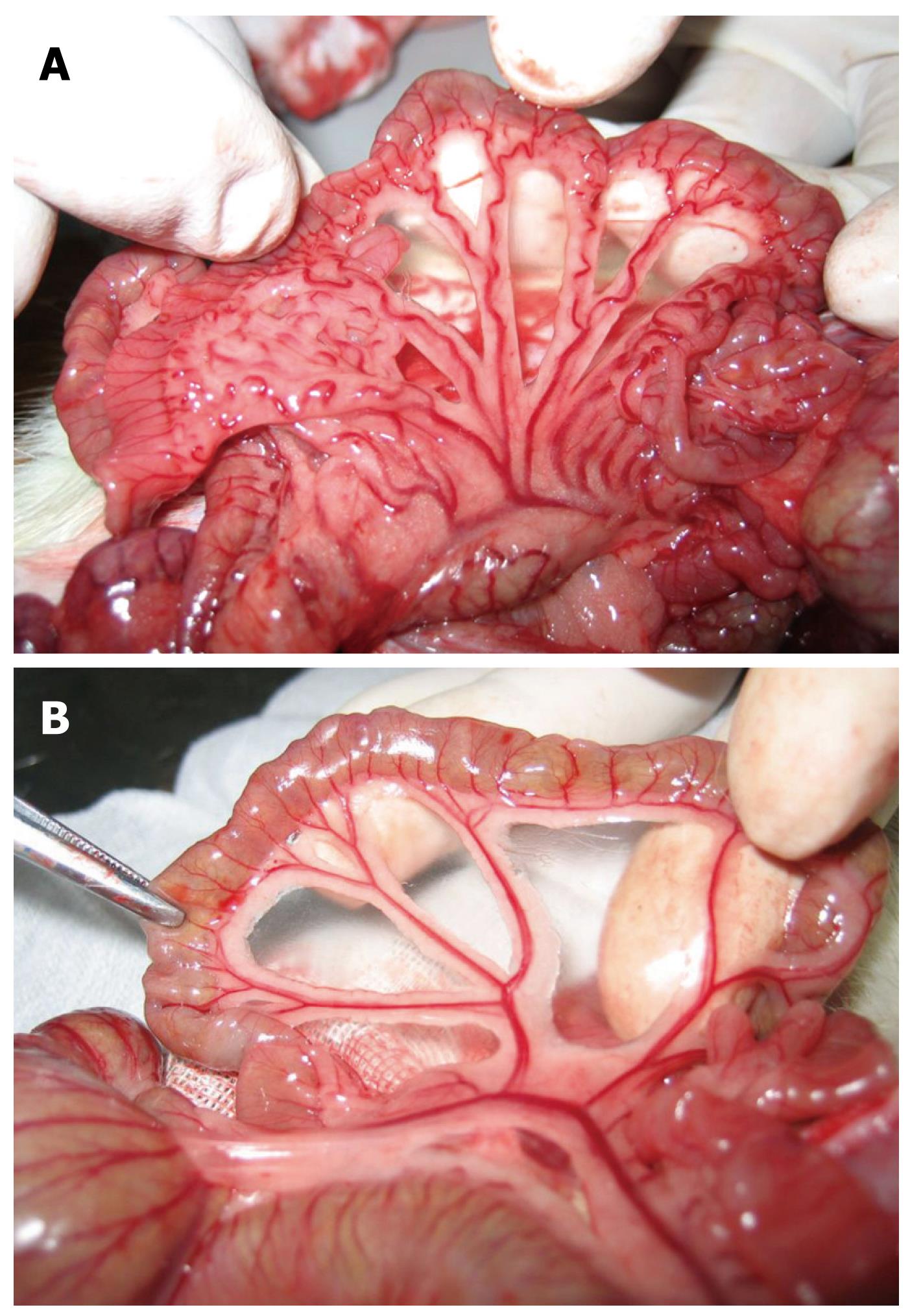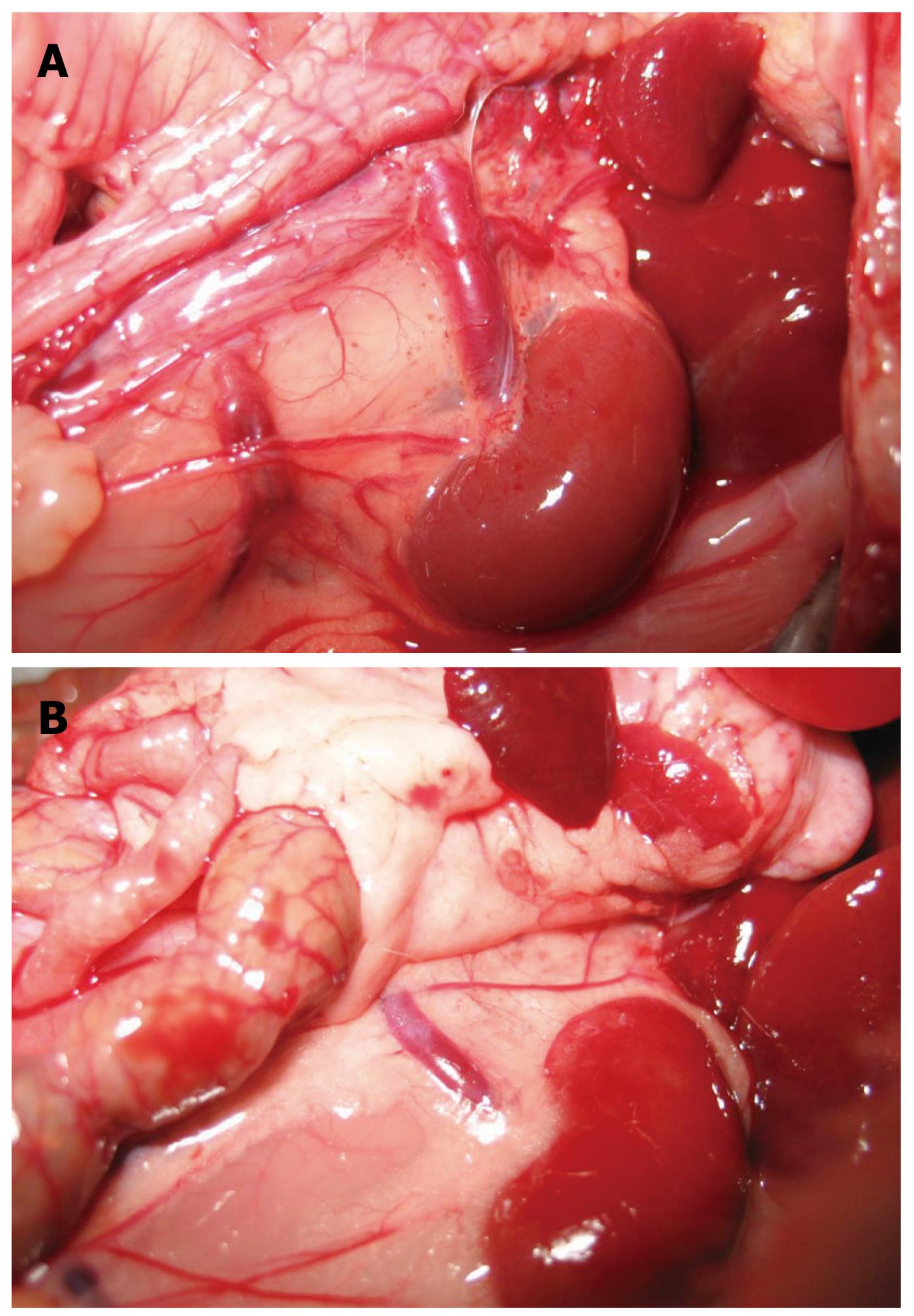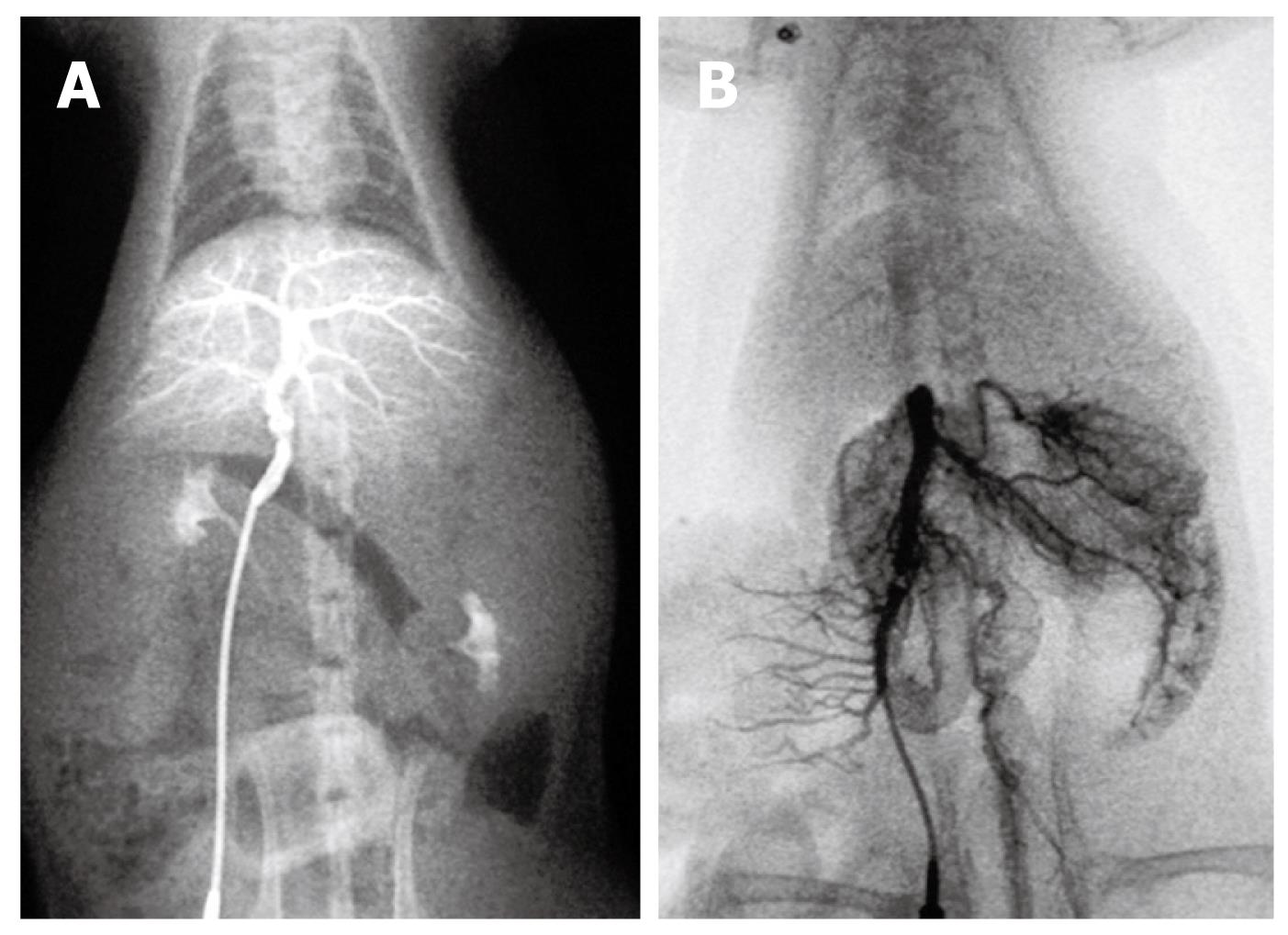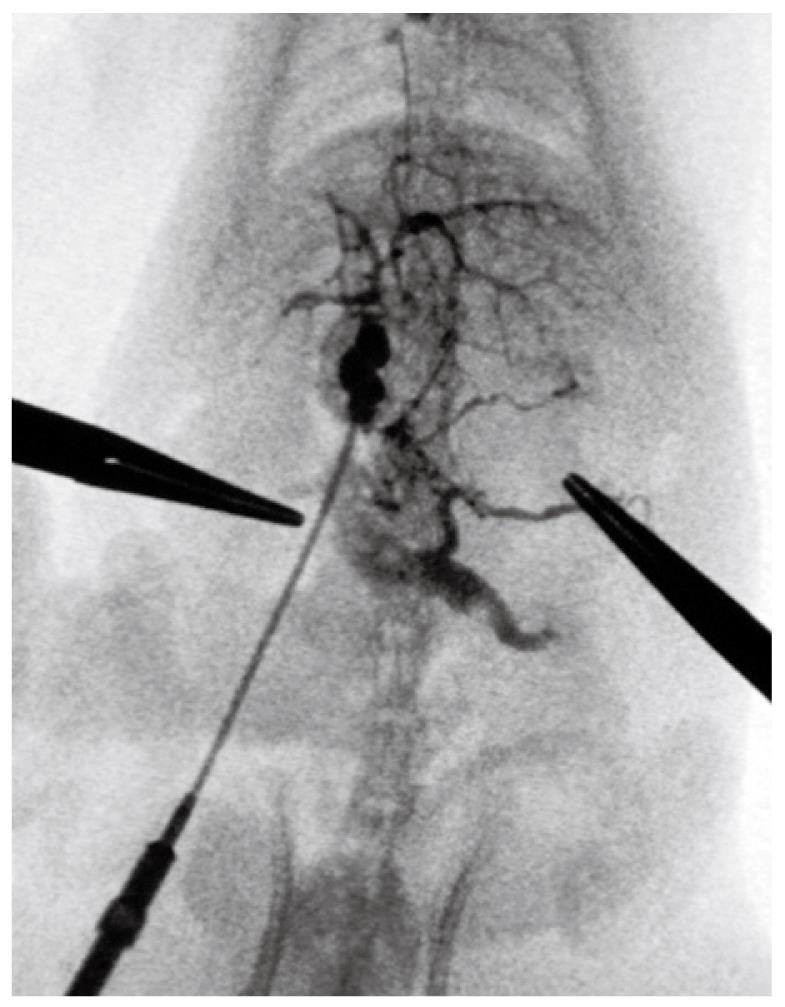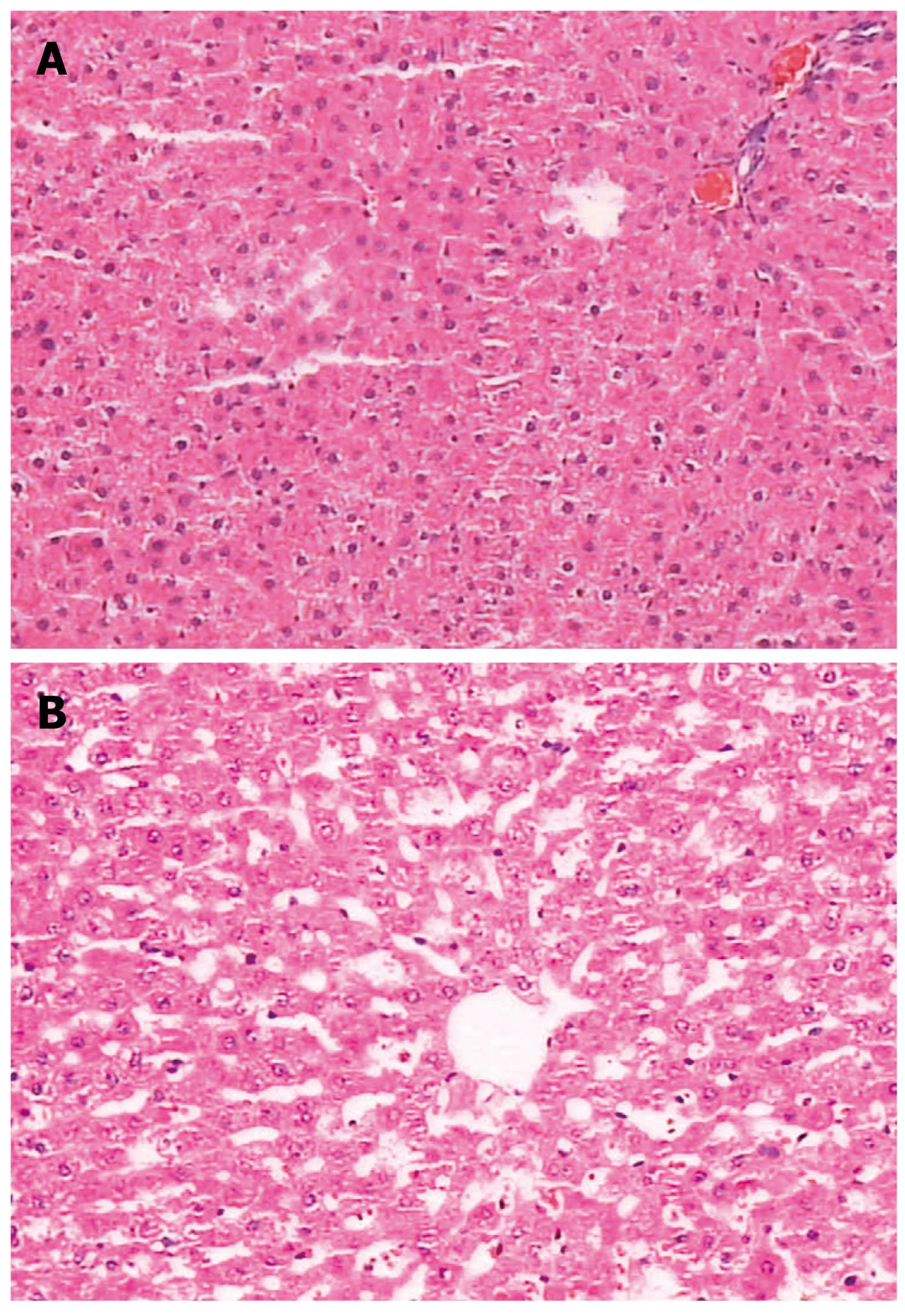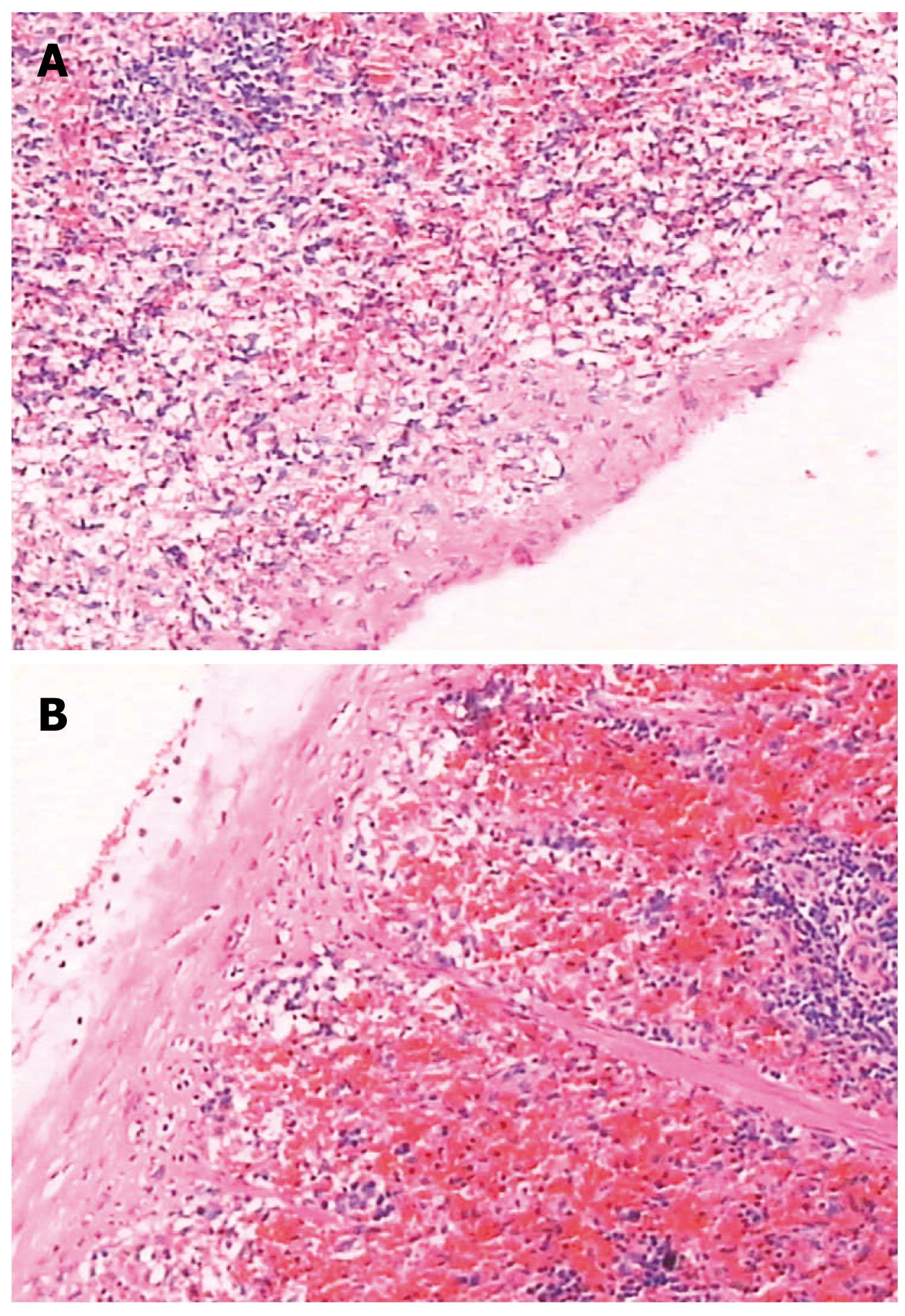Copyright
©2009 The WJG Press and Baishideng.
World J Gastroenterol. Aug 28, 2009; 15(32): 4049-4054
Published online Aug 28, 2009. doi: 10.3748/wjg.15.4049
Published online Aug 28, 2009. doi: 10.3748/wjg.15.4049
Figure 1 Pressure tendency of PVP after PVL.
Figure 2 Changes in the mesenteric vein.
A: There was no distortion, no varices, no visible collaterals in the mesenteric vein before portal vein ligation; B: Varices were found mainly in the mesenteric vein 2 wk after portal vein ligation.
Figure 3 Collaterals after PVL.
A: In the control rat, the left renal vein was thin and of normal size, no collateral vessels could be seen between the spleen and the left kidney; B: Collaterals could be seen mainly between the spleen and the left kidney 10 wk after PVL. The left adrenal vein was markedly engorged. The collaterals could also be seen between the inferior mesenteric vein and the posterior peritoneum.
Figure 4 Portal venography in control rat.
A: The intrahepatic portal vein was shown as tree twig branches. There was little contrast medium in the mesenteric vein and the splenic vein; B: After ligation of the portal vein, images of the superior and inferior mesenteric vein and the splenic vein appeared simultaneously, but no collateral circulation could be seen.
Figure 5 At week 10, portal venography showed the mesenteric vein with varices and collaterals.
A lot of contrast medium was seen in the vena cava, which indicated the establishment of the collateral circulation. These observations were not seen in the control rats. The left adrenal vein after PVL was clearly shown with an enlarged diameter, while this vein was not seen in the control group.
Figure 6 There were no significant changes in liver pathology.
A: Pathologic image of rat in Group-I; B: Image of Group-II.
Figure 7 Pathologic image of the spleen.
A: Group-I; B: Group-II, the capsule was thickened, the spleen sinus was enlarged due to congestion, there was significant sinus endothelial cell proliferation, and the spleen trabeculae were widened. The white pulp and germinal center had significant atrophy.
- Citation: Wen Z, Zhang JZ, Xia HM, Yang CX, Chen YJ. Stability of a rat model of prehepatic portal hypertension caused by partial ligation of the portal vein. World J Gastroenterol 2009; 15(32): 4049-4054
- URL: https://www.wjgnet.com/1007-9327/full/v15/i32/4049.htm
- DOI: https://dx.doi.org/10.3748/wjg.15.4049










